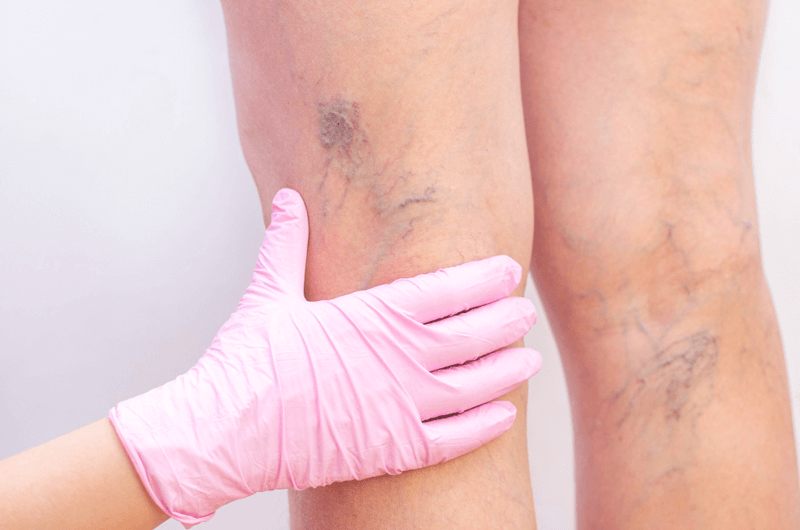Varicose veins are a common condition treated in physicians’ offices and hospital outpatient departments. Several types of procedures are used to treat incompetent veins. Medical coding outsourcing is a viable option to keep track of changes in CPT codes and coverage policies to report varicose vein treatment correctly. Providers also need to meet medical necessity guidelines and prior authorization requirements to receive reimbursement for treatment of the condition.
Incompetent Veins – An Overview
Varicose veins are enlarged, twisted veins that are raised above the surface of the skin. The veins commonly affected are those in the legs and feet and appear dark purple or blue. When the valves in the veins become weak, blood can flow backwards and collect in the veins, a condition known as venous insufficiency. Varicose veins develop when the veins get bigger due to this pooling of blood. Complications associated with varicose veins include pain, blood clots or skin ulcers.
Treatments
Varicose vein treatment includes lifestyle changes and surgical and minimally invasive options. Surgical removal of varicose veins or vein stripping is usually done only for aesthetic reasons. Phlebectomy is a minimally invasive surgical option that involves very small incisions to insert a hook to remove the incompetent veins. The blood supply in the legs will not be affected by surgery as the blood will re-direct into other healthy veins.
Today, there are several alternatives to the surgical removal of varicose veins. These include:
- Direct puncture sclerotherapy: Sclerotherapy is often considered a good alternative for small varicose veins. The sclerotherapy solution is injected into the vein, causing it to scar and forcing blood to be directed through healthier veins. The shrunken vein is reabsorbed into local tissue and eventually fades.
- Mechanochemical endovenous ablation: Mechanochemical endovenous ablation is a new tumescent-less technique, that combines mechanical endothelial damage using a rotating wire with the infusion of a liquid sclerosant.
- Endovenous laser ablation: This technique involves using ultrasound guidance to place a laser fiber into the abnormal vein through a tiny incision. After numbing the vein with local anesthetic, the laser activated as the fiber is slowly removed. The resulting reaction in the vein wall causes collapse and sclerosis of the vein wall with minimal discomfort.
- Radiofrequency ablation: Radiofrequency ablation (RFA) uses thermal heat to cause damage to the vein, which leads to immediate closure of the vein.
Varicose Vein Evaluation and Treatment CPT Codes
- Varicose Vein EvaluationEvaluations determine the type of treatment that needs to be administered. The CPT codes used for those determinations include one radiology code and two codes categorized under Extremity Venous Studies.76942 Ultrasonic guidance for needle placement (radiology code)The codes under Extremity Venous Studies category are:
93970 Duplex scan of extremity veins
93971 Duplex scan of extremity veins - Varicose Vein TreatmentDirect puncture sclerotherapy (36468–36471)36468 Single or multiple injections of sclerosing solutions, spider veins (telangiectasia), limb or trunk
36470 Injection of sclerosing solution; single vein
36471 Injection of sclerosing solution; multiple veins, same leg - Mechanochemical endovenous ablation (36473, 36474)
- 36473 Endovenous ablation therapy of incompetent vein, extremity, inclusive of all imaging guidance and monitoring, percutaneous, mechanochemical; first vein treated
- 36474 subsequent vein(s) treated in a single extremity, each through separate access sites
- Laser ablation (36478, 36479)
- 36478 Ablation therapy of incompetent vein, percutaneous, laser; first vein treated
- 36479 Ablation therapy of incompetent vein, percutaneous, laser; second and subsequent veins
- Radiofrequency ablation (36475, 36476)
- 36475 Ablation therapy of incompetent vein, percutaneous, radiofrequency; first vein treated
- 36476 Ablation therapy of incompetent vein, percutaneous, radiofrequency; second and subsequent veins
- Ligation/stripping (37718, 37722)
- 37718 Ligation, division, and stripping, short saphenous vein
- 37722 Ligation, division, and stripping, long (greater) saphenous veins from saphenofemoral junction to knee or below
- Stab phlebectomy (37765, 37766)
- 37765 Stab phlebectomy of varicose veins, one extremity; 10-20 stab incisions
- 37766 Stab phlebectomy of varicose veins, one extremity; more than 20 incisions
Treatment of Incompetent Veins – Coding Changes in 2018
Changes for 2018 include three revised codes and addition of four new codes.
The following codes were revised to support correct coding:
36468 Injection(s) of sclerosant for spider veins (telangiectasia), limb or trunk
36470 Injection of sclerosant; single incompetent vein (other than telangiectasia)
36471 Injection of sclerosant; multiple incompetent veins (other than telangiectasia), same leg
Four new codes were added to describe newer treatments involving the use of chemical adhesive and non-compounded foam sclerosant:
36465 Injection of non-compounded foam sclerosant with ultrasound compression maneuvers to guide dispersion of the injectate, inclusive of all imaging guidance and monitoring; single incompetent extremity truncal vein (i.e., great saphenous vein, accessory saphenous vein)
36466 Injection of non-compounded foam sclerosant with ultrasound compression maneuvers to guide dispersion of the injectate, inclusive of all imaging guidance and monitoring; multiple incompetent truncal veins (i.e., great saphenous vein, accessory saphenous vein), same leg
36482 Endovenous ablation therapy of incompetent vein, extremity, by transcatheter delivery of a chemical adhesive (i.e., cyanoacrylate) remote from the access site, inclusive of all imaging guidance and monitoring, percutaneous; first vein treated
36483 Endovenous ablation therapy of incompetent vein, extremity, by transcatheter delivery of a chemical adhesive (i.e., cyanoacrylate) remote from the access site, inclusive of all imaging guidance and monitoring, percutaneous; subsequent vein(s) treated in a single extremity, each through separate access sites (List separately in addition to code for primary procedure)
2018 Coding Updates – Points to Note
- Codes 36465 and 36466 describe injection(s) of a “non-compounded” foam sclerosant into an extremity truncal vein. This sclerosant is one that is not compounded by a physician or other qualified health care professional.
- Codes 36470 and 36471 should be reported when a compounded sclerosant foam is injected for treatment of an incompetent extremity truncal vein. Compounding is the process of combining, mixing, or altering the ingredients of a drug by a physician or other qualified health care professional to tailor the needs of an individual patient.
- Codes 36465 and 36466 include compression maneuvers that are performed under ultrasound guidance to control the dispersion of the foam sclerosant and to ensure that the sclerosant reaches the intended treatment area. The ultrasound guidance and monitoring should not be reported separately.
Review Payer Policies
To understand coverage for varicose vein treatment, it is important to review Medicare’s National Coverage Determination (NCD) and the Medicare Advantage Contractor (MAC) local coverage determination (LCD), or check reimbursement policies for non-Medicare payers. Many payers also require prior authorization for certain procedures. Payer guidelines should also be checked to ensure that documentation meets their policy criteria.
Outsourcing medical billing and coding to an experienced service provider is a great option when it comes to reporting treatment procedures using the right codes and submitting claims to meet payer requirements.




